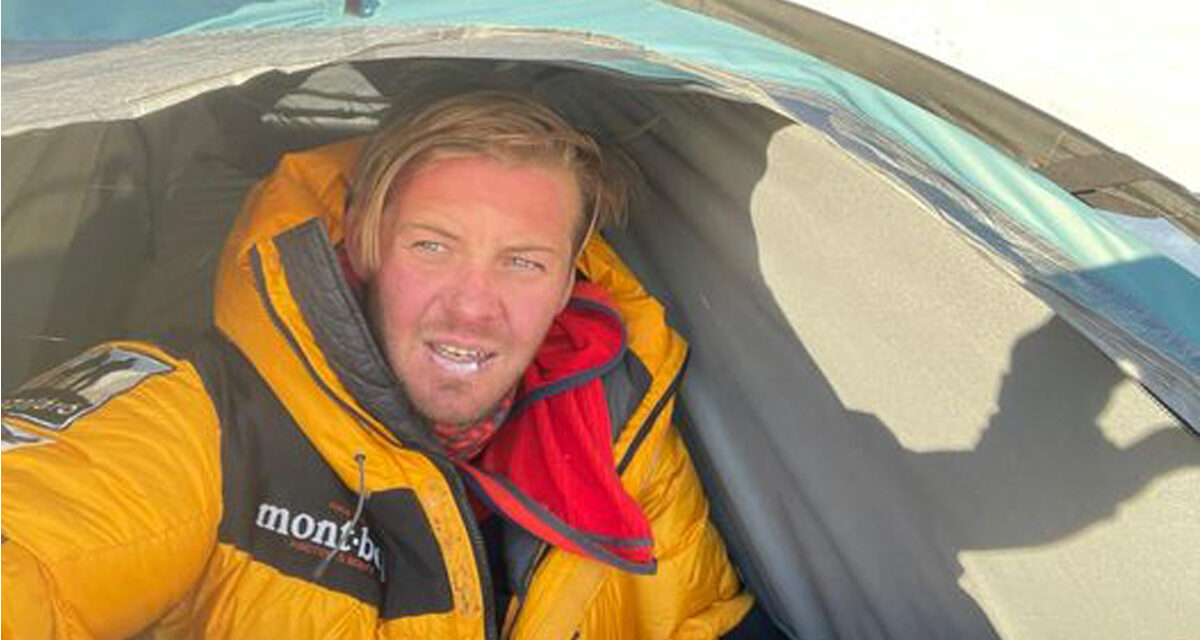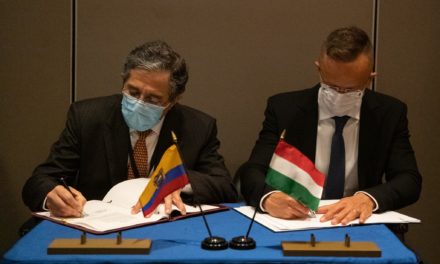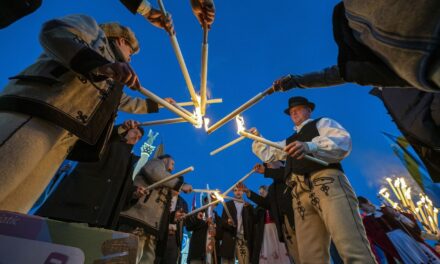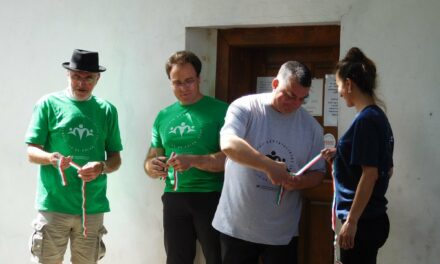The Nagyvárad alpinist is now considered the most successful active Hungarian alpinist, having conquered six 8,000-meter peaks, most recently the 8,126-meter Nanga Parbat. Exclusive interview.
First of all, I want to congratulate you on your phenomenal performance. How are you feeling health-wise?
Tired, I recently arrived in Budapest. This week has been a constant rush. Down the mountain, different cities, airports. But other than that I'm fine, everything is fine.
This adventure started for you exactly one month ago, with the acclimatizations. Now that you are back home after the successful summit attack, what thoughts are going through your head?
Well, to rest myself a little, relax a little, and basically try to re-acclimatize to the world of work and construction plans next week. To pick up where I left off. These are pretty much what I have.
When do you meet the family?
I already met them, they came out to pick me up at the airport.
When you set out to conquer Nanga Parbat, we already knew what happened to Szilárd Suhajda, that he stayed on Mount Everest. You knew him well, you climbed with him. How much did this disrupt your last days at home? How much did it affect you?
As much as I tried not to think about it. When I heard what happened, I was a little sad and thought about things, but then I tried to focus only on the expedition.
To Nanga Parba, the "only" 8,126-meter peak. Besides its height, what do we need to know about this mountain?
The height of the mountain, i.e. the difference in level between the base camp and the summit, is about 4,000 meters. The valley is very deep, so it is a very difficult and technically challenging peak.
To make things more difficult, Nanga Parbat is very steep. This is why the peak day, the day of the peak attack, is very long. There are different vertical rock sections to climb.
I think it is technically more difficult than Mount Everest, but the peak is not as high. However, the difference in level between the base camp and the summit is perhaps the largest in the Himalayas. The mountain has two sides, Rupal and Diamir. The base camp is at 3,800 meters at Rupal and at 4,200 meters at Diamir, and you have to climb 4,000 meters to the summit.
Is there as much scrambling here as on Everest?
There isn't. There are far fewer, only Everest has so many.
It's not as steep as Everest...
Well, there isn't, but of course Everest is the highest mountain in the world, that's why everyone tries to climb it. This is also true in the domestic context, every year many people attempt the Moldoveanu peak (the highest peak in Romania at 2,544 meters - editor's note), even though there are even more difficult, but say, ten meters lower peaks in the Fogarasi mountains. But since it is the highest, everyone tries to climb it. That's how people are.
Besides you, were there other "clean" climbers (not using helpers and supplemental oxygen - ed. note)?
There were others, of course. Some succeeded, some did not.
How do you decide when and how long to climb during acclimatization so that it helps rather than hinders the later summit attack?
Based on experience and how I feel. But of course you always need at least one or two nights at the triple camp, around 6000-6200 meters, to have a chance at the summit.
You put us on edge when we didn't hear from you for a week. What happens on the mountain then? Why is that?
There was no such. I kept in touch with my team the whole time, only during one of the acclimatization rounds, which lasted for several days, I was at such a high altitude where there was no internet. I couldn't send pictures and reports home, but I could exchange messages with my family via satellite phone.
Do you rely on your intuition and experience, or rather on the measurements of the instruments, when you decide when to leave and how far to go on a given day?
I always set a goal, I know that now I have to go to camp one, two or three. If I feel good, then even higher. Here's how it works. In addition, I have gadgets that help, for example a small device with which I received weather forecasts on a subscription basis. They mostly work, and they are quite important. Except when they don't, but they're pretty much okay. I collect all such data before departure so that there are no surprises.
It also helps to see what other people are doing in base camp. Everyone has information about the weather and snow conditions.
I prepare myself as much as possible in terms of information, and only then do I go on an acclimatization round.
Csaba, we saw your top video, it was very touching how you gasped for air and sent a message to all the Hungarians of the Carpathian Basin. A lot of flags came out of the backpack. Can you tell us a little bit about the importance of these?
Yes, for me, my motivation, why I climb high mountains, eight-thousanders, means more. In addition to sporting performance, it is at least as important to represent the Hungarians of the Carpathian Basin. I have many friends in the Highlands, Transcarpathia, Southern Region, Székelyföld, and I want to encourage them with these climbs to remain Hungarian in their homeland, not to assimilate.
I had the Hungarian flag with the inscription Nagyvárad, which I have always carried with me since 2009. Now I also had a Székely flag that my good friend Madefalvia gave me.
I really like Székelyföld, I go there quite a lot, now they were with me at Nanga Parbat.
In addition, I had three sponsor flags, Homecoming, Ulysses and Bihari Túrák.
The way down is at least as important as the way up, since you can't live up there. How much does the return trip take out of you? So, how much strength do you need to keep to get down the mountain?
The more the better. The way down is also very difficult. Mainly because at such a time one already approaches it like, well, it's done, it can't be a big problem. However, if we take it that way, you are only halfway to the top. Statistically, most accidents happen on the way down, because the climber is already very tired. I also got back to the base camp very late, already at night; as I was, I fell into the tent and fell asleep.
Csaba, what awaits you at home now, back in the gray weekdays?
I was really looking forward to the gray weekdays, and they will definitely be good. Yes, it is waiting after all.
You are the most successful active Hungarian climber. Does it depress you or lift you up and fill you with a good feeling?
The most successful Hungarian climber - that sounds very strange. Let's rather say that I have the most eight thousand.
And what are your thoughts about this?
I'm glad it turned out that way. But by the way, Zsolt Erőss was also from Transylvania, and at that time he had the most. Somehow it is written like this, Transylvanian Hungarians are good at mountain climbing.
This is a very good ending, but I have one more question, what is your next plan?
I don't even know, the truth is that I have no such plans. It is very difficult for me to tear myself away from taking so much time away from work, family, and various plans to participate in such expeditions. Nevertheless, every year I managed to go on one of these expeditions. I don't know how much longer I can do this, but I don't have any plans for now, that's the truth. It can be a Révi climb, or a Bihari tour in the Bihari Mountains, Pádis or perhaps Egyes-kő. Who knows, something relaxed, simple, friendly.
I really, really missed these domestic landscapes when I was at the top.
Featured image: Faebook page of the Homer













